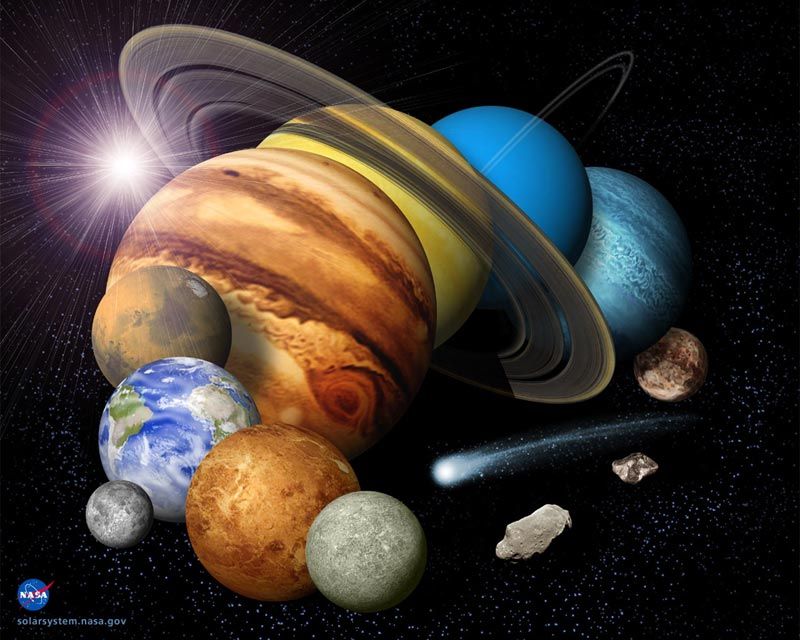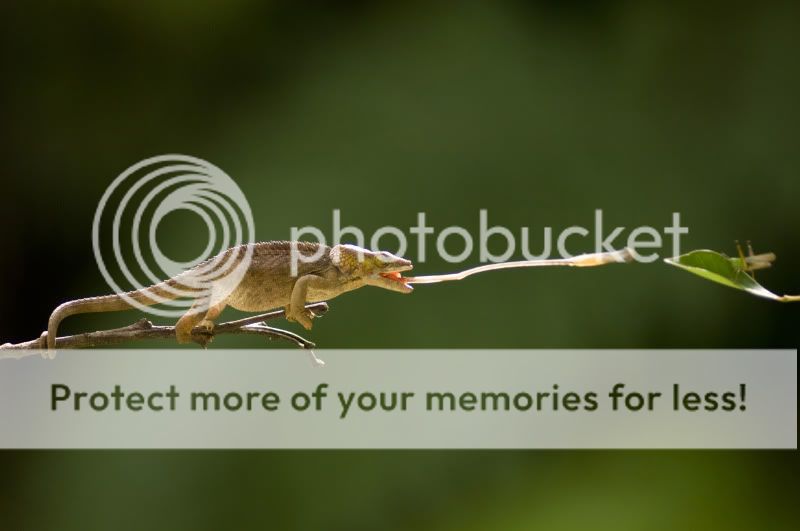
“I think we’re living through the greatest age of discovery our civilization has ever known,” declares British physics superstar Professor Brian Cox as a preamble for each episode of The Science Channel’s BBC import Wonders of the Solar System. Episode by episode, Dr. Cox deconstructs our wondrous Universe one focus at a time—the Sun, the Big Bang, life on other planets. But he does something even more important. He infuses his own obvious enthusiasm and passion for his field in each experiment and factoid. As a viewer, you can’t helped but be absorbed in the intergalactic vortex of knowledge. The timing of this mini-series and emergence of Cox’s exuberant personality could not be better. Funding for NASA missions has been cut dramatically, with an ongoing re-evaluation the role space exploration should play in the national budget and science ambition. American viewers should get used to Cox as a modern-day Carl Sagan, because his star is rising fast. ScriptPhD.com was extraordinarily fortunate to sit down with Dr. Cox in Los Angeles for a one-on-one podcast about the show, the current state of space exploration, and what is possible to achieve experimentally if we only try. My conversation with the inspirational, eloquent and brilliant Brian Cox, along with our review of Wonders of the Universe, under the “continue reading” cut.

Astronomy was never my strongest suit academically. And while I’ve always had a respectful admiration for the solar system and interplanetary sciences, I was never the kind to stargaze or spend hours on the telescope on the off-chance of spotting Mars, Venus or the Saturn rings. It’s a testament, then, to the immensity, ambition and quality of The Science Channel’s latest mini-series project, Wonders of the Solar System for holding me positively captivated while screening the first two episodes. A concept as simple as a solar eclipse is the running theme for the entirety of the first episode, “Empire of the Sun.” By the time the eclipse is recorded, it is the climax to an astounding collection of facts about how rare, precious and ordered the Sun (and its position to the Earth really is). A perfect eclipse is only possible right here on planet Earth—400 times the planetary distance away from the Moon, with the Sun an exact 400 times the diameter of the Moon. No other moon in the vast expanse of the solar system has these properties. Pretty amazing stuff, right? The timing of Wonders of the Solar System could not come at a better time. With our economic and moral spirits at a nadir, it’s time to discuss the importance of space travel and exploration to our scientific, nationalistic and optimistic psyches. President Obama’s 2011 NASA budget, while providing an increase of $6 billion for technology innovation, scrapped manned space flights, including a manned mission to the Moon and any proposals of future Mars exploration. Neil Armstrong, the first man to walk on the Moon, strongly criticized the move as handicapping spaceflight and exploratory ambition. One of the things Wonders of the Universe reminds us, and that Dr. Cox reiterated in our podcast below, is that scientific discoveries come out of limitless ambition, and often from asking completely unrelated questions. Nothing is more ambitious for mankind than exploring the Universe that houses our miraculous existence. Future episodes will examine the Wonders of our atmosphere, the similarity between our planet and Mars, and most excitingly, examining the possibilities of alien life in the solar system.

Part of the appeal of Wonders is that unlike many educational platforms that talk at the viewer in order to inform, Wonders feels like an interactive, experimental experience. When Cox isn’t zipping from one far-fetched corner of the world to another (catching an aurora borealis in the Arctic Circle! a solar eclipse in India! Mars-watching in Tunisia!), he’s pointing out cool, and often eye-catching, experiments that show viewers the science and physics that makes our solar system so fantastically unique. Who would ever know that a tornado in the Midwest is actually a physics parallel to the formation of our very universe. The scientific principle at hand—conservation of angular momentum—stopped the solar system from collapsing under its own gravity during formation, allowing a stable, rotating disc of planets to form. We all know the sun is powerful, shining 1 kW of energy for meter squared of the Earth’s surface, equal to one million times the yearly power consumption of the United States in each second! But it’s a lot more fun to watch Cox show this measurement in Death Valley with a pail of water, a thermometer, and some physics. Likewise the Sun’s sunspots, a still not quite understood phenomenon that has been correlated to the Earth’s seasons and weather, which Cox illustrates with a digital camera. All of this extemporaneous experimentation is reminiscent of the best of Carl Sagan, just with a modern twist.
The Los Angeles Times, in their television review of Wonders called Brian Cox “the nerd that’s cooler than you.” Already a budding superstar in the world of particle physics (check out his TED talk on his work at CERN’s Hadron Supercollider), Cox is that perfect mix of half-scientist, half-TV star. Without him, Wonders would be a completely different endeavor. (Listen to our podcast below as an example of his charismatic eloquence.) To boot, BBC and The Science Channel spared no expenses when it came to production values. In our one on one meeting, Cox let us in on the secret that the whole of Wonders was filmed with an old-fashioned 1970s cinematic lens, lending a decidedly movie feel to the show, particularly the graphics and digital sequences. While some imagery is real, such as amazing Martian sunsets captured by the Mars rover, other digital effects (notably in the “Empire of the Sun” episode) are stunning enough to make you feel like your television is the portal window of a spacecraft in intergalactic orbit.
Wonders of the Solar System airs on The Science Channel on Thursdays at 9 PM ET.
While in Los Angeles to promote Wonders of the Solar System, Dr. Cox graciously sat down with ScriptPhD.com to discuss the show and his views on space exploration. Among our discussion topics:
•How he is still able to channel a passion for the solar system
•Why he thinks it’s critical for NASA to take risks and go to Mars
•The possibilities of life in the outer solar system and
•Why it’s a huge mistake for NASA to cut their budget for space exploration
Take a listen below:
~*ScriptPhD*~
*****************
ScriptPhD.com covers science and technology in entertainment, media and advertising. Hire our consulting company for creative content development.
Subscribe to free email notifications of new posts on our home page.
]]>
In 2006, The Discovery Channel, in partnership with the BBC, premiered the 11-part Planet Earth, the most expensive natural history mini-series ever filmed, and the first in high definition. It gave viewers a sweeping, intimate overview of the Earth’s diverse natural habitats. Yet long before Planet Earth premiered, plans were already underway for its follow-up opus, LIFE, which would focus on the animals, insects, and creatures that call those habitats home. The result, four years in the making, is historic television—never-before-recorded mating rituals, survival scenes, and brutal savagery. For the naturalist and the nature-lover, LIFE will, quite simply, change your view of life. After the “continue reading” cut, we preview the first few episodes and offer a rare candid interview with executive producer Mike Gunton. We are proud to make LIFE on Discovery Channel an official ScriptPhD.com Editor’s Selection.
The Earth is home to over 30 million diverse animal and plant species, each evolving, adapting, and surviving under rapidly changing conditions. The vast majority of these species has never before been documented in their native habitats… until now. The Discovery Channel and BBC have reprised their Planet Earth partnership, conducted over 3,000 hours of painstaking video footage, and endless hours of consultation with researchers and naturalists to create a living, breathing, not to mention gorgeous, catalogue of life as Darwin could only have been able to imagine it. Narrated by Oprah Winfrey, LIFE will be broken down into 11 episodes—the challenges of life, birds, creatures of the deep, fish, hunting mammals, insects, mammals, plants, primates and reptiles and amphibians, along with a “making of” episode—that will shed stunning light on the spectacular array of animal behavior, sometimes majestic (the penetrating gaze of Kenyan cheetahs ready for a hunt), other times flat-out bizarre (you haven’t lived life until you’ve seen a pebble toad bouncing like a taut ball down a precipitous mountain). “We wanted LIFE to represent the heartbeat of what John Hendricks thought about when he founded Discovery,” noted current president David Zaslav at a recent Los Angeles LIFE screening. “It shows you life as no one has seen it before, with most scenes recorded for the first time ever [on film or photography],” he added.

Indeed, LIFE showcases a number of television ‘firsts’—scientific and technical. Among other highlights, you will see the first footage of a spectacular humpback whale mating battle called the “heat run” (a truly mesmerizing piece of television!), killer whales stealing elephant seal calves, seduction of Vogelklop powerbirds and mating rituals of spider crabs, and my personal favorite, a Basilisk “Jesus” lizard walking on water! Take a look at a group of kimodo dragons hunting down a buffalo ten times their size in a highly calculated, precise (and vicious!) two-week attack:
In addition, LIFE producers and videographers developed a new camera tracking system—the “yogi cam”—to track migrating reindeer and elephants. Our interview below with executive producer Mike Gunton reveals more behind-the-scenes tricks and secrets of filming.
Take a look at this webisode that shows the innovative technology employed by producers and to capture some of the ‘firsts’ we’ve described:
Beyond the bravura filmmaking and technicolor high-definition images, what struck this scientist and film/television buff the most was that the personality of the animals shines through above all else. They are the real stars of LIFE. Sensitive moments of such remarkable intimacy evoke drama and suspense, relief and love. Yet midst these anthropomorphic tales, one is never led too far away from brutality and competition—the hallmarks, after all, of species survival. Scenes of lions attacking a hyena during the “Mammals” episode literally had me holding my breath, one that I was able to let go in relief as the hyena escaped surefire carnage. The dedication of parents in the wild is sometimes astonishing. A tiny frog the size of a postage stamp must swim miles against the ocean’s current every day to feed her young tadpoles an egg so that they can survive to independence. If you think human love affairs are full of spectacle, wait until you wade into the animal kingdom! There is nothing as pathetic as a lonely, rejected hippo doing the walk of shame across an arid desert and having to wait an entire year before he might seek companionship again. That same desert is home to scores of randy, chauvinistic male chameleons that are not very familiar with the concept of good old-fashioned romance; talk about wham, bam, thank you ma’am! And the primitive mating rituals of the violent, hyper-aggressive alpha male bullfrog are downright uncomfortable to watch. It is difficult to stare into the eyes of a young, intelligent Brazilian brown-tufted capuchin monkey figuring out how to use tools to crack open their beloved palm nuts and not see the face of a human toddler exploring their surroundings and gaining independence. It is difficult not to laugh at the naïve hubris of an ibex calf menacingly stomping its hooves at a predator fox whose capture it avoided by a hair’s breath and quite a bit of luck. And, after viewing LIFE, it is impossible to view animals of all size and shape as anything but breathtakingly complex and spellbindingly beautiful.

Interview with BBC Executive Producer Mike Gunton
Mike Gunton is the Creative Director of the Natural History Unit of the BBC, and oversaw production of LIFE. He has a first class degree in zoology and a doctorate from Bristol and Cambridge Universities.
ScriptPhD.com: Having now screened four episodes, and realized how grand and immense this project is, can you tell us about how the idea came about to do it?
Mike Gunton: It came about in about August of 2005, when we originally pitched [the project]. The team came together to properly begin work right at the beginning of 2006. Planet Earth hadn’t even aired; we had no idea how successful it was even going to be. The scope of Planet Earth, which was very much about the planet as a habitat and extraordinary landscapes and habitats of the world, and of course animals were in it, but they were animals within the landscape. And we felt it was kind of “the other side of the coin” to tell about that, which is about the lives of those animals and the struggles and challenges they face to survive in those habitats. So, we wondered if we could tell the complimentary side to the Planet Earth story—Planet Earth is the stage and LIFE is the play. That was broadly our thinking.
Also, of course, 2009 was the anniversary of the publication of The Origin of Species, so there was quite a lot of interest and focus on evolution and adaptation. And of course, LIFE is full of examples of extraordinary adaptation by animals, possessing adaptive “tricks”, whether physical or mental or behavioral, to overcome the challenges of survival. Then we realized that like Planet Earth, we had to be global, we had to go to every continent on the planet, and we also had to be completely broad-ranging in terms of the types of creatures and living things that we would feature to a much greater extent than we did on Planet Earth. We made sure that we’d cover everything from primates to insects and everything in-between.
SPhD: Just from the first few episodes, it seems the possibilities of choosing what animals to cover are infinite. So what ultimately dictated narrowing down exactly which species and scenarios you guys ultimately chose to capture?
MG: We decided there were, effectively, nine major groups of living things on the planet. We grouped all marine invertebrates together as a big catch-all of all creatures that life in the sea that aren’t fish. Then, to decide on the actual stories, that was probably one of the most daunting things of all, actually, to think, “There’s somewhere between 10 and 30 million species on the planet, how do we pick 150 that are going to be the most amazing, quintessential, rewarding representatives?” But we had a whole series of filters, and one of the main ones was that we did want to show people things they hadn’t seen before, things that would impress them and surprise them and show them how extraordinary animal behavior can be. Also, we wanted to show, rather than generic stories about lions or elephants or chimpanzees, very specific stories about individuals having individual challenges so that the audience sensed that when they’re watching, they’ve kind of been parachuted in on this particular animal’s life, on this critical day in its life.
SPhD: And it works quite spectacularly! I know we always want to anthropomorphize these creatures, but there was such personality that came out of some of the stories, like the poor hippo who couldn’t make his conquest, or the ibex out in Israel showing relief at outrunning the fox. So there was a lot of character that came out.
MG: See, I think this is really, really important, because anthropomorphism has a bad reputation. But I don’t think that what we’re doing is anthropomorphizing in the sense that people think it’s wrong, but actually people are frightened to accept that we’re all animals, [with] an integral spectrum of things that go on. And I think you can absolutely connect and relate to those animals without necessarily having to stretch to say these animals feel fear or concern or heroism or dedication, all those things that we admire in humans and ourselves. I think they’re absolutely there to be admired in animals. That’s something I feel very strongly myself, that there is a tendency to not think of animals as anything but little black boxes, when they clearly are not.
SPhD: Can you let us in on some of the secrets of what it took to capture these unlikely (and sometimes spectacular!) scenarios? Was it just patience, longevity, luck…
MG: All of those things, of course. I like to think we make our own luck. But luck is a big part of it. You do have to get lucky. First of all, we do an enormous amount of research, and we are drawing on a network or web of extraordinary experience. One of the things about people who work in the natural history industry is that once you join you never leave! So there are people who have worked in that place for thirty years, and the cameramen are the same. They have so much knowledge and experience that you start to “know” what’s likely to happen. And the cameramen tend to be brilliant naturalists. They have a real sixth sense about animal behavior and animal activities. So all of these things poured into the pot together, and stirred, does give you the chance to get things that you’d otherwise think to yourself are impossible. I often think to myself when I get back from a shoot, “How on Earth did we actually get that?” If you walk out into the Indonesian rain forest and hear a gibbon call, and it’s a mile away, how on Earth are you going to get anything more than a shot of that? And of course, we don’t do shots anymore—these are really complex, developed cinematic sequences. So the only way you can do that is by learning all the things in your favor: lots of periods of time, lots of science, we work a lot with the scientists. A lot of these stories actually come from them, because many of them are so new that you can’t get them in the textbooks or on the internet.
Watch a brief behind-the-scenes video that reveals some of the secrets of creating the series:
SPhD: Any precipitous moments for the crew? Anyone feel their life was in danger at any point?
MG: One of the things that we do is, we like to think that we are very safe. Knowing the animals, you don’t put yourself into situations where you are at risk. It’s very unlikely that anyone is going to get eaten by a lion, because we just know how it behaves in that way. Things where it got trickier, for example, are those komodo dragon sequences [in Episode 2]. Kevin, the cameraman, never felt particularly at risk, but he said it was unnerving because both creatures were so otherworldly. He has filmed reptiles and amphibians for 25 years, he said that once they’d made that first bite [into the buffalo that they’d end up excoriating], he felt they were like heat-seeking missiles. They weren’t going to be detracted from their mission, which was to track that prey for the next two and a half weeks. So although being amongst them was incredibly intimidating, he still felt that it was probably OK. Generally, when we film hunts, it’s over in a second. This was a kill that lasted two and a half weeks!
SPhD: Have any fun field stories to share with us?
MG: Just more along the theme of stuff that’s challenging or dangerous. One of the stories that we did that I think is probably one of the most courageous, certainly logistically the toughest, and most expensive, was we filmed a thing called a heat run, which is in the mammals program. It’s basically a humpback whale mating or courtship ritual. Effectively what happens is that a female, when she comes into season, will attract the males by various means—she whacks her pectoral fins and she bellows—and the males are then attracted to her. And once they get close to her, rather than allowing them to court her or to mate with her, she then swims off, and then effectively induces them to chase after her. While they’re doing that, they’re then in a fight with each other, and they’re all scrapping to see if they can be the one to eventually swim alongside her and be accepted to be the one to mate. These males get more and more hyped up and they start crashing into each other and push each other down and they blow these amazing bubbles out of their blowholes, and they come leaping out of the water and crashing down. And they’re swimming at seven or eight miles and hour. They get like a rocket.
To film them was incredibly challenging. We filmed them from the air, which meant that we had to have a helicopter. Now, this is the middle of the ocean, so we had to get the helicopter from Fiji and it was right at the end of its range. Filming from the boat itself was quite tricky, just to be able to keep up with them. But the most challenging and the most tricky thing of all was actually getting the underwater shots. Because the cameraman that did this couldn’t use scuba gear, the bubbles emitted from which would upset and disturb the whales. He had to do it on a snorkel. Then he had to take a single breath. So when these whales were hammering along, we had to get him in the boat, get ahead of them, plop in the water, take a breath, dive down, get some shots, come to the surface, take a breath, and so on about four or five times. He said it was like standing on a freeway with six juggernauts, six huge Mac trucks hammering towards him, with the drivers all having their eyes shut all while he’s having to hold his breath. We were in the water about 17 days, and in the end, it all boiled down to about a couple of hours.
SPhD: Given everything you’ve discussed, for people reading this before they’ve watched the mini-series, what would you guys collectively like the audience to get out of this? What are some of the things you hope that all this effort that went into this mini-series rewards them with?
MG: On two levels. As a television series, I want them to come away with thinking they’ve been immersed in the life of these animals, that the way we’ve done this, and the effort we’ve taken places them into the intimacies of these animals’ lives. And especially with the way that we’ve filmed it, so that you get the drama and the pace of and the excitement of the animals come through. And the other thing is, on a more philosophical level, I would hope that [the viewers] would take away, as I do, that the things that we admire in people can also be seen in animals. And that they are passionate, that they are concerned, they are wonderful, caring, sharing, powerful, aggressive, but they are individuals who have these unique characteristics. As a final though, people have asked me what I thought about LIFE, I can think of one word. Heroism. They are heroic. A lot of the animals do things that genuinely make the hairs on the back of your neck stand up in admiration of their heroic endeavors to survive.
LIFE premieres on the Discovery Channel Sunday, March 21st, 2010 at 8 PM ET/PT.
Enjoy more interactive content, including series photography, webisodes, a global map of endangered species, and and interactive “gene machine” to show relatedness of animals on the LIFE website. You can also follow LIFE on Facebook and Twitter.
View series trailer here:
~*ScriptPhD*~
*****************
ScriptPhD.com covers science and technology in entertainment, media and advertising. Hire our consulting company for creative content development.
Follow us on Twitter and our Facebook fan page. Subscribe to free email notifications of new posts on our home page.
]]>
